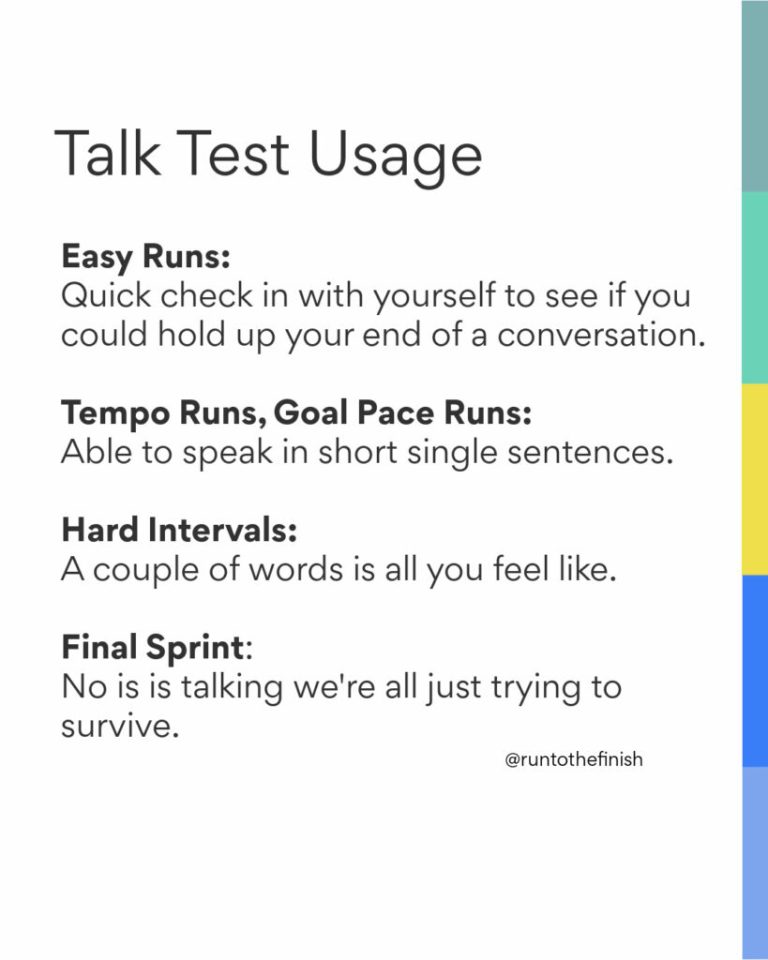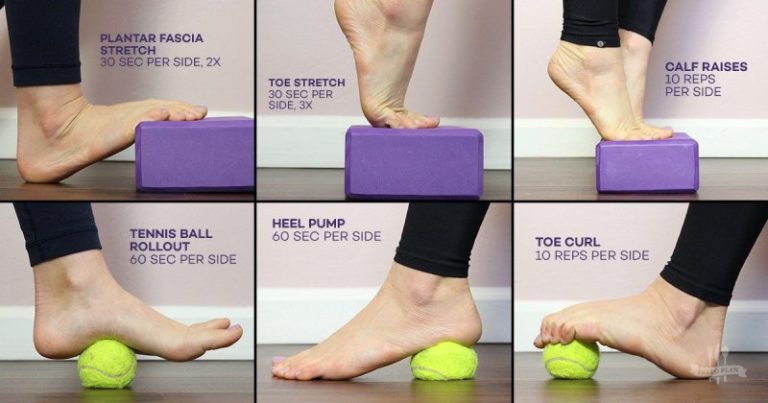How To Run Without Getting Tired?
To run without getting tired, focus on proper breathing techniques and maintain a consistent pace. Incorporate interval training and gradual increase in distance to build endurance effectively.
Running is an excellent form of exercise that offers numerous health benefits. However, many beginners struggle with fatigue and stamina issues. By implementing certain strategies and techniques, you can improve your running performance and maintain your energy levels throughout your run.
We will discuss some practical tips to help you run without getting tired and enjoy your runs to the fullest. So, lace up your shoes and get ready to hit the road with renewed energy and endurance.

Credit: www.wikihow.com
Proper Warm-up And Stretching
When it comes to running without getting tired, a proper warm-up and stretching routine is crucial. It not only prepares the muscles for the upcoming activity but also helps in preventing injury. Incorporating dynamic warm-up exercises and static stretching into your pre-run regimen can significantly enhance your running performance and minimize fatigue.
Dynamic Warm-up Exercises
Dynamic warm-up exercises involve active movements that elevate your heart rate and increase blood flow to the muscles. They help to loosen up the muscles and enhance flexibility, thereby reducing the risk of strains and sprains during the run. Before your run, consider including the following dynamic warm-up exercises:
- Leg swings
- High knees
- Butt kicks
- Lunges with a twist
- Arm circles
Static Stretching
After completing the dynamic warm-up, static stretching allows you to focus on individual muscles and improve their flexibility. This type of stretching should be done gradually, holding the stretch for about 30 seconds without bouncing. Incorporate the following static stretches into your routine for optimal benefits:
- Calf stretch
- Quadriceps stretch
- Hamstring stretch
- Hip flexor stretch
- Shoulder stretch
Breathing Techniques
Learn effective breathing techniques to run without getting tired. Improve your endurance and maintain a steady rhythm by focusing on deep inhales and controlled exhales.
Diaphragmatic Breathing
Diaphragmatic breathing involves deep inhales, pushing your belly out, then exhaling fully to engage the diaphragm.
This helps increase oxygen flow to your muscles, reducing fatigue during your run.
Rhythmic Breathing
Rhythmic breathing sets a pattern where you inhale and exhale for the same duration, syncing with your steps.
For example, inhale for three steps, then exhale for two, maintaining a consistent rhythm.
Don’t underestimate the power of proper breathing techniques when it comes to improving your running endurance!
Improving Running Form
Improve your running form to avoid fatigue by focusing on posture, stride, and breathing. Concentrating on these key elements can help you run more efficiently and with less effort, allowing you to go longer without feeling tired.
Posture And Alignment
Maintaining proper posture and alignment while running is crucial to optimize your performance and prevent fatigue. Make sure to keep your head up, shoulders relaxed, and back straight.
Cadence And Stride Length
Focus on your cadence and stride length to avoid overstriding or taking too short of steps. Strive for a comfortable pace with a quick turnover of steps.

Credit: www.wikihow.com
Building Endurance
Building endurance is key to running without getting tired. By improving your body’s ability to sustain physical activity, you can increase your running stamina and endurance. Endurance building techniques involve various training methods that target different aspects of your cardiovascular and muscular systems. Here are some effective methods to build endurance and improve your running performance:
Interval Training
Interval training involves alternating between high-intensity bursts of activity and lower-intensity recovery periods. This type of training helps improve cardiovascular fitness and endurance. By challenging your body to work at higher intensities and then allowing for recovery, interval training can effectively enhance your overall endurance and running ability. Incorporating interval training into your running routine can help you push through fatigue and build the stamina needed for longer runs. It’s a powerful method for boosting your endurance and increasing your speed and stamina.
Long Slow Distance Runs
Long slow distance (LSD) runs are an essential component of endurance building for runners. These runs are performed at a comfortable, steady pace for an extended period, typically covering longer distances than your regular runs. LSD runs help improve cardiovascular efficiency, enhance endurance, and build mental toughness. By gradually extending the duration of your LSD runs, you can condition your body to handle prolonged physical activity and reduce the onset of fatigue during running. This type of training is crucial for increasing your body’s capacity to sustain running without getting tired.
Fueling And Hydration
Fueling and hydration are crucial aspects of running for both beginners and experienced runners. Eating a balanced diet and hydrating properly play a vital role in improving running performance, endurance, and preventing fatigue. In this section, we will explore some essential tips to help you fuel and hydrate effectively to ensure you can run without getting tired.
Eating A Balanced Diet
When it comes to running, a balanced diet is key to providing your body with the necessary nutrients and energy to perform at its best. Here are some important points to keep in mind when it comes to your diet:
- Aim to consume a combination of carbohydrates, protein, and healthy fats.
- Carbohydrates are your body’s primary source of energy, so include plenty of whole grains, fruits, and vegetables in your meals.
- Protein is important for muscle repair and recovery, so incorporate lean sources such as chicken, fish, beans, and tofu into your diet.
- Don’t forget about healthy fats, which help with nutrient absorption and provide sustained energy. Avocados, nuts, and olive oil are great choices.
Additionally, be mindful of your portion sizes and aim to eat small, frequent meals throughout the day to keep your energy levels stable. Avoid heavy meals before a run, as they can cause discomfort and digestive issues.
Hydrating Properly
Proper hydration is essential before, during, and after your runs. Here are some tips to help you stay hydrated:
- Drink water regularly throughout the day, even when you’re not exercising.
- During your runs, aim to consume around 4-8 ounces of water every 20 minutes to replace the fluids lost through sweat.
- If you’re running for longer durations or in hotter weather, consider using a sports drink to replenish electrolytes.
Remember, everyone’s hydration needs are different, so pay attention to your body’s signals and adjust accordingly. It’s always better to be proactive about hydration rather than waiting until you feel thirsty.
In conclusion, fueling and hydrating properly are key components of running without getting tired. By maintaining a balanced diet and staying hydrated, you can support your body’s performance and enhance your running experience. Incorporate these habits into your routine, and you’ll notice the difference in your energy levels and overall running performance.

Credit: m.youtube.com
Frequently Asked Questions On How To Run Without Getting Tired
How Can I Run Longer Distances Without Getting Tired?
To increase your endurance while running, gradually increase your mileage each week and incorporate interval training to improve your cardiovascular fitness. Remember to pace yourself and listen to your body to avoid overexertion.
What Should I Eat Before Running To Avoid Fatigue?
To avoid fatigue during your run, consume a meal or snack containing complex carbohydrates, such as whole grains or fruits, a few hours before your run. Stay hydrated by drinking water and consider incorporating a small amount of protein for sustained energy.
How Can I Reduce Muscle Fatigue While Running?
To reduce muscle fatigue while running, ensure you have a proper warm-up routine before your run. Incorporate strength training exercises to strengthen the muscles used in running, and don’t forget to stretch and cool down after your run.
Conclusion
To conclude, mastering the art of running without getting tired goes beyond physical endurance. It involves proper technique, pacing, and mental strength. By integrating the tips and strategies shared in this post into your running routine, you can increase your stamina and maintain better endurance, ultimately enhancing your overall running experience.
Keep pushing, stay focused, and enjoy the journey towards becoming a proficient runner!





